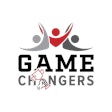Cable strength equipment is well-suited to the functional fitness aspirations of many members; however, the machines can be confusing and intimidating. With sound instruction and a little promotional effort, fitness centers can help more members to enjoy cable training.
Fitness centers typically have a few pieces of cable strength equipment, whether stand-alone or part of a multi-station. However, they are frequently under-used. Athletes make good use of cable equipment, and Michael R. Bracko, sports physiologist/director for the Calgary-based Institute for Hockey Research, says, "It is the ultimate form of athletic weight training." In fact, the origins of cable training are often traced back to American football. Yet, despite it being great for athletes, many fitness members can be intimidated by equipment that is not as straightforward as sit-and-push resistance machines. As a result, they may never find out for themselves the benefits of cable training.
Benefits of cable training
One of the principal advantages of cable training versus other forms of resistance equipment is that it brings stabilization muscles into play. "If you are standing up when you are doing the exercise, you get the benefit of all the stabilizing muscles," Bracko explains. Because a greater number of muscles are engaged, more energy is used, and the basal metabolic rate increases.
There are also advantages over free weight training, as there is no need to look for weights, and changing weights is simple. The freedom of movement also allows users to accomplish different exercises on one machine, says Jonas Serrano, a personal trainer for New York Health & Racquet Club, New York, N.Y. And, cable training can provide a more interesting workout. As Jane Taylor, fitness director for Healthworks Fitness Centers for Women, Boston, Mass., says, it provides variety and the challenge of balance and coordination, and builds adaptability.
Part of the appeal of cable equipment is the ability to work in multiple planes, which is more in keeping with natural body movements. "Multi-planar movements are desirable because the body is designed to move as a unit," says Damon Roxas, national director of personal training for Crunch Fitness, New York, N.Y. "When using multiple planes during an exercise, the body recruits more muscles, uses more joints and distributes the stress of the exercise across the body as opposed to a repetitive isometric movement that can lead to injury," he explains. "This results in a more functional workout that limits the risk of injury and is more useful for day-to-day activities."
Cable equipment is well-suited to functional training. "More core stability is required to perform with good technique; and, more proprioception is required because it is a closed kinetic chain exercise," says Taylor. Serrano adds that it is "simple to simulate real-life movements of twisting and bending."
Cable training can also help to correct muscle imbalances. "The occupations of many people place unbalanced demands on the body, which result in muscle imbalances," says Bracko. So, someone who works at a computer all day may have shortened chest muscles and overstretched back muscles. "With cable equipment, you can work on these imbalances through ... reversal exercises."
Transferring that over to a sports environment, ice hockey, football and other athletes are often in the athlete-ready position. While you can work muscles to make an athlete stronger for that position, you can also work muscles in reverse of that so the body remains in balance, says Bracko.
A downside of cable training is that, because it engages more muscles, the benefits are spread throughout the body. Bracko says that this can be a disadvantage if a client wants to work on a specific muscle group. For instance, if a client only wants to work on the chest, then a traditional bench press may be more suitable.
Cable challenges
Because cable training is multi-planar, there is heightened risk of performing an exercise incorrectly. Traditional resistance machines set the client in the right position, and minimize the potential for incorrect technique. But, with cable machines, users have to position themselves correctly, and move the cable in the right plane. Poor technique is more readily accommodated. "Technique and position of the body take on a more important role compared to traditional machines," says Bracko. "You need good knowledge of the exercise to understand where the body position is when starting and finishing." Roxas says common mistakes in cable training can include not keeping the core engaged, poor posture (rolled shoulders) and improper weight selection (either too heavy or too light).
Members need to recalibrate their weight expectations when working with cable. The amount of weight a novice cable user can effectively train with will be less than they are used to with traditional resistance machines. "At the very least, a client should reduce weight as a matter of safety and performance, particularly while learning the correct body position," says Bracko. He adds that other mistakes include jerky movements and moving too quickly. Controlled motion is key. Similarly, Serrano says that the challenge with cable machines lies in maintaining proper form throughout the exercise. This is difficult when too much weight is being attempted.
Because of the broader range of muscle groups called upon when cable training, users need to be better prepared. People can be introduced to cable training too soon, Taylor says, before they have had the time to develop the foundational skills needed to train effectively and safely. Such skills include balance, coordination, stability and kinesthetic awareness.
Fabio Comana, research scientist and exercise physiologist for the American Council on Exercise (ACE), San Diego, Calif., echoes these thoughts. "The most common mistake is using this equipment before one is physiologically prepared to use it to its full capacity," he says. "Our industry is so caught up on functional training and sports conditioning that most trainers ignore appropriate progressions and forget that the majority of our population is inadequately prepared to use this equipment. As many lack joint integrity, adequate stability and mobility, or the ability to stabilize the spine, they find the path of least resistance, typically an inferior exercise technique that does more harm than good."
This can, in turn, harm the fitness facility. "We know that people make choices to exercise based upon how they think and feel. [I]f one is pushed too hard too soon, perhaps using the wrong equipment, the potential for injury and discomfort increases," says Comana. "This negatively impacts adherence. There is a strong correlation between high exercise dropout rates and poor membership retention performance."
Although ACE supports the use of the newer low/high cable systems that allow multi-planar movements, it also warns that users should be physiologically primed. Says Comana, "Deconditioned individuals should always start with machine-based equipment that offers support, and operates in a single plane, fixed lever, and operates bilaterally. As the client develops core stability and some joint integrity, we advocate the progression into more unsupported systems that operate unilaterally, free-moving and in multi-planar patterns to mimic activities of daily living (ADLs)."
Cable systems are being developed accordingly. "Newer cable systems allow for multi-planar push/pull/rotational movements that more closely mimic ADLs (both supported and unsupported)," says Comana. They can also be effectively used for sports conditioning, where development of speed and power is the goal. "Cable systems can also be effectively utilized for eccentric training at end ROM [range of motion] - teaching clients how to decelerate joint movement and avoid injury," he adds. ACE also endorses the use of cable systems for balance training, to offer assistance and then resistance.
Opting for cable equipment
Cable training is a good business for a fitness facility to be in. "Cable equipment ... is so versatile, and can accomplish a range of tasks and exercises at different levels," says Serrano. The variety and diversity it can add to a member's workout also appeals to personal trainers, and allows them the opportunity to be creative and set up interactive and fun exercise routines, says Keith Worts, executive vice president of operations for Crunch Fitness. Variety is psychologically positive. "If a client has different options for exercise as opposed to just free weights and traditional machines, he or she will stay refreshed and motivated for exercise," says Bracko.
For a fitness facility in the market for cable systems, Serrano says it is important to take into account the needs of its members. Cable systems should be as simple to use as possible, and should serve the needs of the majority of your membership. "For Crunch Fitness, since most of our locations are in urban areas, we look for space-efficient equipment with a sleek and clean look," says Worts. "Certain machines are more diverse than others." Taylor says facilities should factor in price, demographics and available space. And, there should be enough space for multi-use.
Fitness centers should also look to accessorize their cable systems. Serrano says that Kettlebells and medicine balls are good to provide alongside cable equipment, as they can be incorporated into functional training. Taylor says that anything can be used alongside cable equipment, and urges facilities to "be creative." Worts says that Crunch Fitness creates a mini-circuit of cable machines, and includes accessories. "Balls, boards, benches and cable attachments are all kept near the machines," he says, "as diversity and creativity are the best attributes of the machines."
Encouraging the discouraged
Some members find cable systems intimidating. Comana suggests reasons for this can include unfamiliarity with the equipment, incompetence and, perhaps, fear of injury from not being properly trained to use this equipment. "Gym members can be intimidated because the machines might seem complicated to operate due to the freedom to move in different directions and at different angles," says Serrano. "But, it is precisely this freedom of movement that makes the machines simple to use and a great multi-tasker."
Roxas says that novice members can get discouraged when they watch experienced cable users performing moves that appear too difficult to mimic. He says other machines are more self-explanatory to use. Further, because they do not have a good understanding of how to perform the exercises correctly, they can be disappointed with the end product of their workout efforts.
A little education goes a long way. "Cable equipment is not as easy as just lifting a free weight, or pulling out a pin," says Bracko. "There is a certain amount of learning in how to properly use them, set them up and how to stand. But, once you have that understanding, it is not that big a deal."
That understanding can be cultivated with clear, well-informed instruction. "Clubs should first train their trainers on the appropriate use of this equipment, and allow their staff time on the floor to encourage and instruct members on appropriate use," says Comana. Are all instructors up to the task? In Serrano's opinion, most instructors have the necessary expertise in how to use cable equipment. Roxas says he believes trainers are skilled at integrating multi-planar cable movements into their sessions for a more effective and functional workout.
But opinions differ. Comana says that most instructors are not well-versed in how to correctly use cable equipment. Bracko says that those trainers who have a degree in exercise science or physiology, and who have certification from recognized agencies, would have a good understanding of correct body positions in cable training. Those who lack that core expertise would not. If your instructors lack the necessary knowledge, encourage them to pursue appropriate educational opportunities. For those whose cable experience is a little rusty, give them opportunities to practice on colleagues.
Promoting use
Fitness centers need to be proactive in helping members overcome the intimidation factor. Taylor suggests that facilities can promote cable equipment use by offering free 15- or 30-minute demonstrations or equipment orientations. However, Comana adds that he does not support having the trainers demonstrate using this equipment, as they typically will demo advanced exercises and pique the interest of members who may then unsuccessfully try to emulate them.
Fitness facilities can also promote cable equipment use through advertisements in the facility. Bracko suggests putting up posters that illustrate the number of muscle groups engaged in certain cable exercises. They could be color-coded - red for primary movers and blue for stabilizers. The right messages can win over new cable adherents. For instance, that cable training is working more muscle groups and using more calories.
Layout can also have an effect on the number of people using the cable equipment. Serrano emphasizes the importance of accessibility. "Machines should be placed in a center location of the gym, without having to go through other gym sections," he says. "This will make it less daunting for new users to try." Mirrors are also a good idea, to encourage exercisers to check their form.
Cable training is not without its challenges, but, with skilled instructors and a little promotional effort, fitness facilities can ensure more members enjoy the stabilization and functional training effects of cable equipment.




































